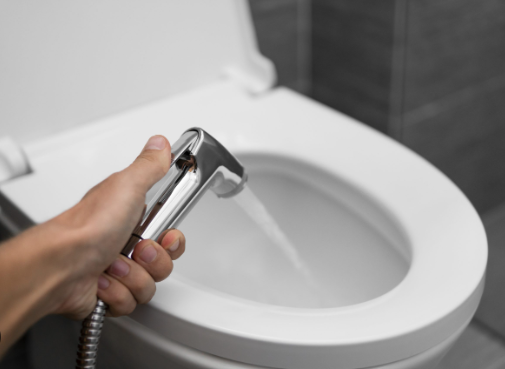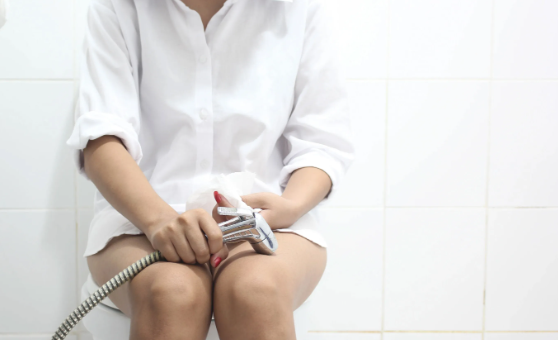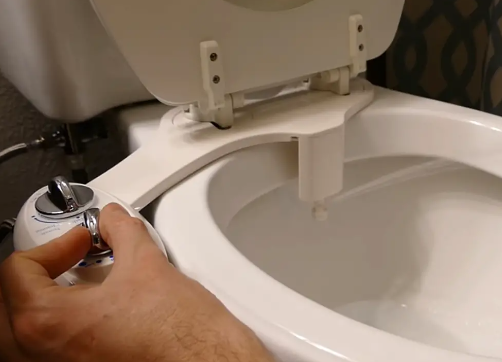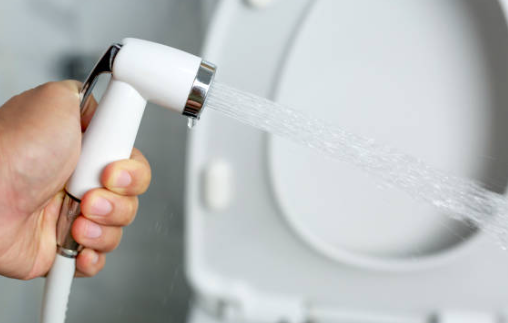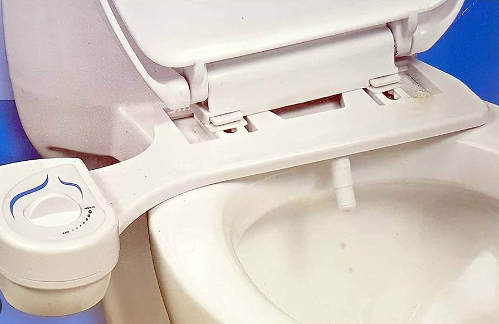The bidet is a modern marvel of hygiene and sustainability! Bidets have taken the world by storm, touted not only as a greener alternative to toilet paper but also as a refreshing and thorough way to stay clean. However, that a seemingly innocuous bidet could transform your bathroom escapades into a splashy spectacle due to bidet water pressure too high. But why would that happen?
If your bidet water pressure is too high, it could be due to several reasons. Firstly, check if there’s an adjustable water pressure setting on your bidet, as some models allow you to control the flow. If it’s still too high, it might be a result of the water pressure from your plumbing system being inherently high.
In this case, consider installing a water pressure regulator or pressure-reducing valve on the water line that supplies your bidet. These devices can help reduce water pressure to a more comfortable and safe level for bidet use. Consulting a plumber or the manufacturer’s customer support can also provide specific guidance on addressing excessive water pressure with your bidet.
Causes Of High Bidet Water Pressure
Bidets come in all shapes and sizes, and so does the pressure of their water streams. Imagine this: you’re all set for a luxurious cleansing session, but as soon as you turn on the bidet, you’re met with a forceful gush that could rival a fire hose. That, my friends, is the unmistakable sign of high bidet water pressure. While I appreciate a powerful stream for various purposes, personal hygiene calls for a gentle touch.
High bidet water pressure can occur due to several reasons, including:
- Plumbing System Pressure: One common cause of high bidet water pressure is that the plumbing system in your home or building has high water pressure. This elevated pressure can result from factors like a municipal water supply with high pressure or an internal issue within your building’s plumbing system, such as a malfunctioning pressure-reducing valve.
- Bidet Settings: Some bidet models offer adjustable water pressure settings. If you’ve recently adjusted your bidet’s settings to the highest level and find the pressure too high, simply lowering the setting can resolve the issue.
- Pressure Fluctuations: Water pressure can fluctuate throughout the day due to changes in demand or other factors. If you notice occasional spikes in water pressure, it may lead to high-pressure bursts from your bidet.
- Faulty Plumbing Components: High water pressure can sometimes result from malfunctioning plumbing components, such as a broken pressure-reducing valve or a faulty pressure relief valve.
- Incorrect Installation: If the bidet was not installed correctly, it may not regulate water pressure properly. Make sure the installation was done according to the manufacturer’s instructions or by a qualified technician.
If you’re experiencing high bidet water pressure and it’s not due to a simple adjustment, it’s advisable to consult a professional plumber to diagnose the issue and implement any necessary fixes to ensure a safe and comfortable water pressure level for your bidet.
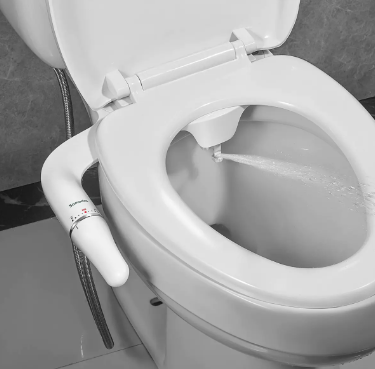
Signs and Symptoms of High Bidet Water Pressure
Picture this: you’re sitting on the bidet, expecting a soothing cleansing experience, but what you get is more akin to being caught in a water fight. Not only does this result in discomfort, but it also leaves you wondering if you’re using a bidet or a makeshift car wash. If you’re unsure whether high water pressure is to blame, keep an eye out for the classic signs: sudden discomfort, excessive splashing, and a sound that resembles an aircraft taking off. These signs are not to be taken lightly – they’re your bidet’s way of telling you it’s time to address the issue.
Potential Consequences of High Water Pressure
While a high-pressure water stream might initially feel invigorating, prolonged exposure to it can lead to some rather unpleasant outcomes. Think about it: the delicate areas down there weren’t designed to withstand the force of a fire hose. Prolonged exposure to high water pressure can lead to irritation and discomfort that’s nothing short of a sore reminder.
Moreover, your bidet isn’t exactly thrilled about the high-pressure lifestyle either. Just like anything mechanical, constant exposure to extreme conditions can lead to wear and tear. This translates to maintenance headaches and potentially costly repairs – something we all want to avoid.
Steps to Fixing High Bidet Water Pressure
“Alright,” I thought to myself, “it’s time to tackle this bidet situation and restore peace to my bathroom.” Here’s how you can ensure that your bidet’s water pressure is as gentle as a breeze on a sunny day.
1. Checking Water Pressure Settings
First things first, you’ll need to locate the water pressure settings on your bidet. Now, different bidet models have different ways of adjusting pressure, so referring to your user manual is like having a treasure map to bidet comfort.
Once you’ve found the settings, it’s time to play Goldilocks – not too high, not too low, just the right water pressure that makes you feel like royalty on your bidet throne.
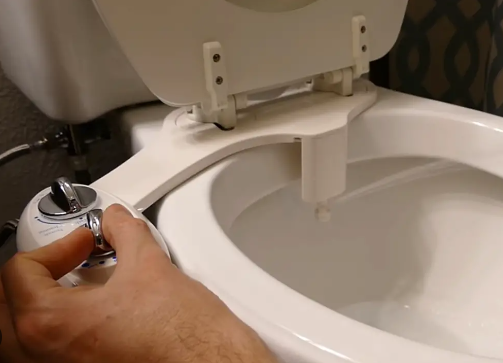
2. Adjusting Water Supply Valve
Remember that valve you’ve probably never paid much attention to? It’s time to give it the spotlight. Find the water supply valve for your bidet, usually located near the toilet or under the sink. Gently turning it clockwise will gradually decrease the water flow and pressure.
Think of this step as tuning a musical instrument – a little twist here and there until you find that sweet spot where water pressure and comfort harmonize perfectly.
3. Installing a Pressure Regulator
Now, if you’re anything like me and prefer a foolproof solution, say hello to your new best friend: the pressure regulator. This nifty device ensures that the water pressure reaching your bidet is always within the Goldilocks range. Installing it involves connecting it to the water supply line of your bidet. While it might sound a tad intimidating, the result is a bidet experience that’s smooth as silk.
4. Consulting a Professional
However, let’s face it – not all of us are born plumbers. If the idea of fiddling with valves and regulators sends a shiver down your spine, it’s time to bring in the pros. A professional plumber can swiftly diagnose the issue, make the necessary adjustments, and leave you with a bidet experience that feels like a spa day every day.
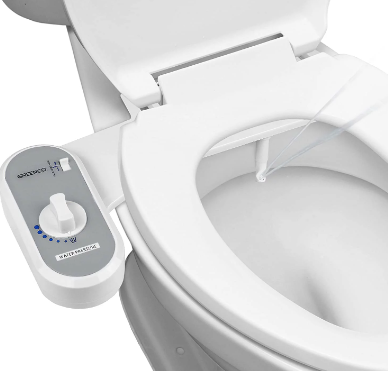
Preventing Future High Water Pressure Issues
“So,” I pondered over my morning coffee, “how do I make sure I never end up in the splash zone again?”
1. Regularly Check and Adjust Pressure Settings
Just like any relationship, maintaining the right balance is key. Every so often, take a moment to check your bidet’s pressure settings and make minor adjustments if necessary. It’s a small effort that can save you from future bidet water pressure dramas.
2. Keep an Eye on Water Supply Connections
As time goes by, plumbing issues can sneak up on you. To prevent future high-pressure surprises, regularly inspect the water supply connections and plumbing for leaks or irregularities.
Conclusion
In the grand tapestry of life, bidets are indeed a blessing. They offer a cleaner, greener, and altogether refreshing way to handle our daily bathroom routine. Yet, like any meaningful relationship, they require a bit of TLC to maintain the magic. The challenge of high bidet water pressure might seem like a small hurdle, but the benefits of a comfortable and gentle cleansing experience are well worth the effort.
Whether you take the DIY route or call in the experts, remember that bidet bliss is attainable. Bidet water pressure too high? Not a problem when you’re armed with knowledge and the willingness to embrace the art of bidet adjustment. So go forth, bidet enthusiasts, and enjoy a thoroughly refreshing and hassle-free bathroom experience!


